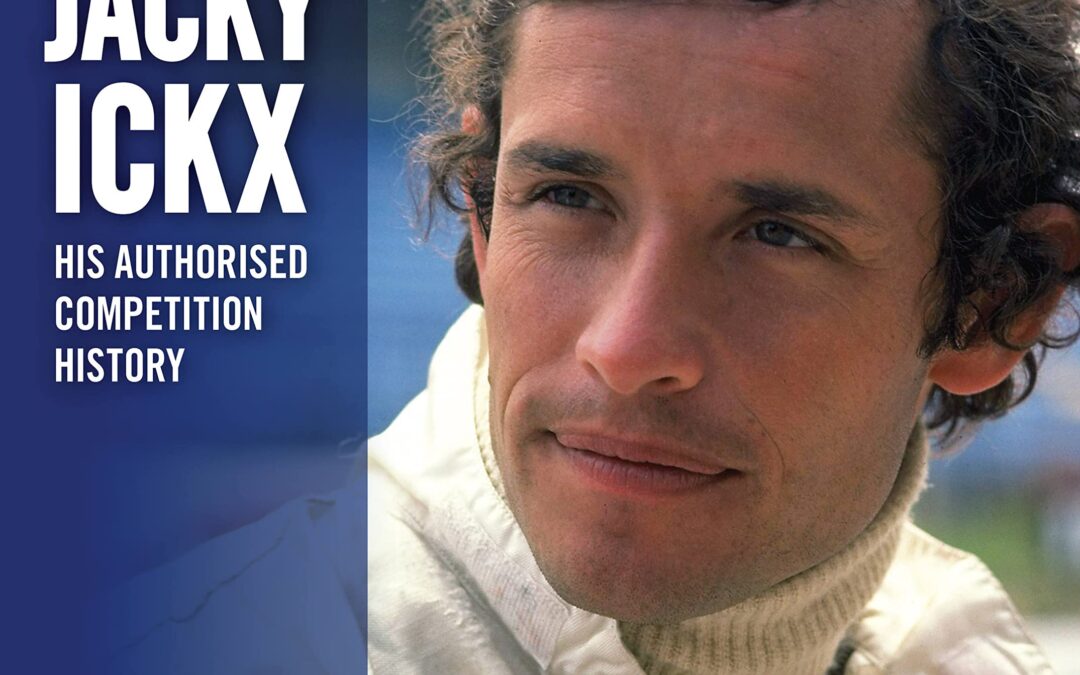
Host Lloyd Bridges takes you on a tour of motorsports in the 60’s. Cobra test at Riverside with Ken Miles, Shelby driver of the era. See the 007 Bond Aston Martin and Sean Connery, slot car racing, bubbletops, Craig Breedlove at salt flats, classic drag racing, and big daddy Ed Roth. This is a 40 min. transport back in time. You will be light-headed watching this show. It is the complete uncut version broadcast Thursday, Sept 8, 1967, on CBS. This is a digital re-master directly from film. It looks great! Bonus
Feature: Motor Mouth Pilot
Live the time machine from 1967 to 2002. See how when things change they really stay the same! Take a ride with hosts Barbi Orr and Jane Norris as they run their motor mouth at events like Willow Springs, You will see many cars from the 60’s still racing today: Cobras, GT350, Vettes, and many others. Also celebrity interviews – see how today’s high-tech BLING BLING WHEELS are designed by Keith Kaucher (today’s top wheel designer). Go to a hidden speed shop in Culver City, Calif., where top master mechanic Steve Beck stores the rarest cars you’ll ever see!
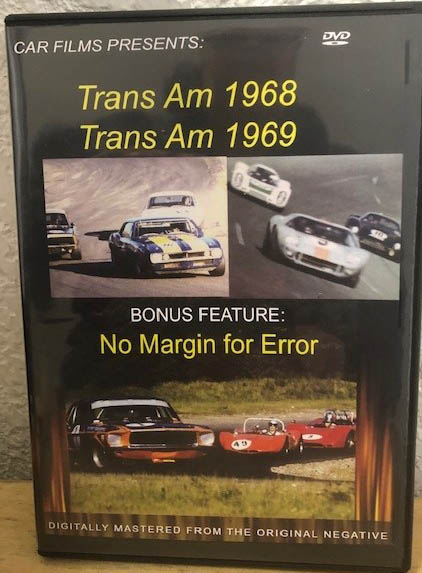
TRANS AM 1968 – 1969
1968 was largely dominated by Mark Donohue driving for Roger Penske. Penske campaigned Camaros through 1969 when he signed with American Motors to race the Javelin in 1970 and 1971. Donohue would chalk up 20 race victories between 1967 and 1970 and three unofficial drivers championships, the third achieved in 1971.
The 1970 Trans Am series is regarded by most racing historians as the high water mark of American road racing. Every “Pony Car” manufacturer was represented with a factory team and top driving talent. Chevrolet had the Chaparral Camaro Z28 team with Jim Hall, Ed Leslie and Vic Elford. Ford’s Bud Moore 302 Boss Mustangs were driven by Parnelli Jones and George Follmer. For Plymouth, the All American Racing Cudas were handled by Dan Gurney and Swede Savage. Sam Posey and occasionally Tony Adamowicz drove Ray Caldwell’s Autodynamics Challenger TA. Jerry Titus had the Pontiac Trans Am. Roger Penske’s Sonoco AMC Javelin team shared Mark Donohue and Peter Revson. The Mercury Cougars were driven by Charlie Rainville, Bruce Jennings and three other drivers in the two races of the 1968 season.
NO MARGIN FOR ERROR
In this 1968 Ford promo film you see why there is “No margin for error” to win. Mustang,(Shelby team, Jerry Titus) and Camaro (Mark Donohue) face off for championship points.
64 cars in 4 categories for the 24 hours of Daytona. Independent Ford GT-40,Porsche long-tail prototypes. Cale Yarborough at Daytona driving Mercury NASCAR, unbelievable ending of the race at 200 MPH.
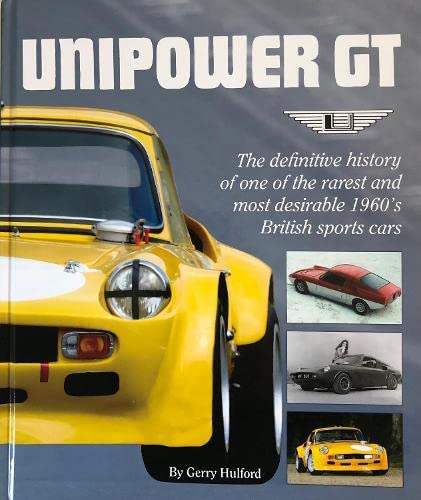
This fully authenticated publication written by Gerry Hulford, is a 500 copy Limited publication. Launched in 1966 to an admiring press and public alike, the Unipower GT took the specialist car market at the time by storm. Considered by the cognoscenti as the best of the limited production sports cars of the 60’s, the car appealed to both wealthy and enthusiast alike. In its later years the cars would embark on a chequered but never to be forgotten campaign of international sports car racing across Europe, almost qualifying for the 1969 Le Mans 24 hrs. Production ceased in late 1969 after just 73 examples had been built, but with still at least 70% production existing, they remain much sought after by collectors the world over. Gerry Hulford has assembled here an historical record of the marque in 172 pages, from its early production and beyond, with an amazing collection of over 420 photographs many of which have never been seen before, illustrating the extraordinary history of these unique cars. The story and photographs take you on an intriguing journey from its inception, development and production, before following owner’s cars across the world, many of whom have lovingly cared for some immaculate examples, as well as those who have devoted considerable effort to the restoration of their cars. The racing history from early 1967 through to today, is covered in detail and chronicles the many on-track endeavours against all odds. Detail on the cars also includes, technical information on suspension setup and a guide to what to look for when buying a Unipower GT. This is the most comprehensive and fully authenticated, by both its Founder and designer, record of the Unipower GT in all its versions and has enough historical information to satisfy the most demanding specialist car owner and enthusiast alike, the supports why it is still revered as the ‘Mini-Miura” of the 60s.
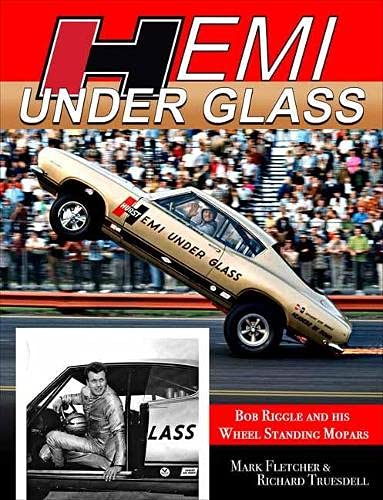
Look up to the skies through Bob Riggle’s eyes in this wheelstanding, must-have Mopar history book on Hemi Under Glass!
While the established stock and modified brackets are long-recognized as the heart and soul of drag racing, it was the wheelstanders that more often than not put butts in the bleachers. In that category, some of the most well-known names included Bill “Maverick” Golden’s Little Red Wagon, Bill Shewsberry’s L.A. Dart and Chuck Poole’s Chuck Wagon. Although, most memorable of all was the Hurst Hemi Under Glass Plymouth Barracuda campaigned by Bob Riggle.
Riggle started his career in the early 1960s as a car builder and mechanic for Hurst-Campbell and eventually ascended to pilot the Hemi Under Glass. When he left Hurst in 1969, the Hemi Under Glass franchise transferred with Riggle. He continued for six more years as the owner/driver of a succession of Hemi Under Glass renditions. In the 1990s he resurrected the concept of the original car—making four different versions (1966, 1967, 1968, and 1969)—and continued to thrill drag racing fans with his wheelstanding antics.
At the time of this writing, Bob’s last run with the Hemi Under Glass was in the summer of 2019. He claims to have retired (he was 83 years old at the time), but he’s claimed that before!
For all the success he enjoyed over his long and distinguished career, which is believed to be one of the longest in all of motorsports, he’s best remembered for a run at Irwindale Raceway in early 2016 with comedian and car buff Jay Leno in the passenger seat in a video that has been viewed more than 10 million times.
This is Bob’s story, one that Mark Fletcher and Richard Truesdell, co-authors of the 2012 book Hurst Equipped, are honored to share. They say the story was easy to tell—given their unprecedented access not only to Bob but also to his vast archive of photos that reflect his ongoing popularity. Many of the photos in this book are seen in print for the very first time.
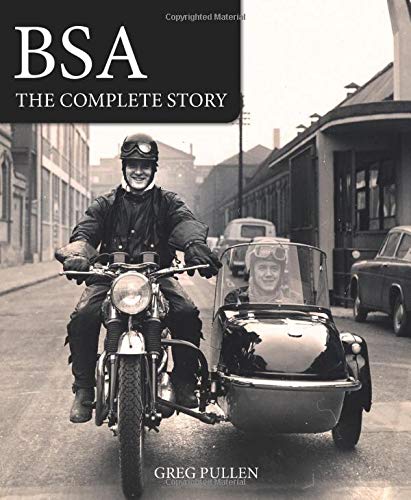
BSA was once the world’s most successful motorcycle company, manufacturing more machines than any other in the world by the mid-1950s. And yet, after winning the Queens Award to Industry for exports in 1967 and 1968, it collapsed into bankruptcy in 1973.
This is an epic story of rise and fall, even by the precarious standards of the British motorcycle industry. With more than 170 illustrations, this book recalls the founding of the company and its foray into bicycle and then motorcycle production and describes the evolution of the various models of motorcycles including specification tables. It discusses the diversification into cars, commercial vehicles and guns for Spitfires and recounts the successes – two Maudes Trophies and numerous racing victories. Finally, it documents the fall from grace to bankruptcy and beyond.

A car by car record of early Chevron single seat racing cars
updated edition
In the late 1960’s a young engineer worked at the Chevron factory in Bolton. His name was Kevin Hodgkinson and he fell in love with the cars he was building. Later he lived a dream when he owned one of those cars – a Chevron B17 – and used the car in hillclimb and sprint events.
Kevin has an encyclopaedic knowledge of the early Chevron single seat race cars and in 2009 he published “In The Mind’s Eye: Chevron Classic Formula Race Cars 1967 – 1970”. The book rapidly sold out.
Kevin has now updated the book with additional content and the second edition of the book details every single seat racing car coming out of the Chevron factory in that period.
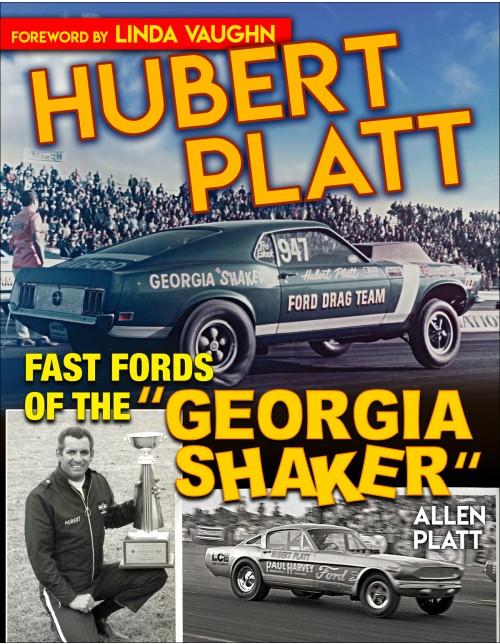
Webster’s Dictionary lists the term showman as “a notably spectacular, dramatic, or effective performer.” In the art of drag racing, Hubert Platt checked all boxes. Known as the “Georgia Shaker,” Platt cut his motoring teeth on the long straightaways and twisty back roads of South Carolina while bootlegging moonshine. After a run-in with the law in 1958, Platt transferred his driving skills from illegal activity to sanctioned drag racing and began one of the most dominant runs in drag racing history until his retirement in 1977.
After stints in 1957, 1938, and 1962 Chevrolets, Platt’s next ride was a Z11 Impala, which carried his first “Georgia Shaker” moniker. Once Chevrolet pulled out of sanctioned racing, Platt found a new home with Ford for 1964 and remained there until he hung up his helmet. Some of the cars he campaigned became icons in their own right. His factory-backed and personal machines included a 1963 Z11 Impala, 1964 Thunderbolt, 1965 Falcon, 1966 Mustang Funny Car, 1967 Fairlane 427, 1968-1/2 Cobra Jet, 1969 CJ Mustang, 1970 427 SOHC Mustang, and 1970 Boss 429 Maverick.
A 1986 NHRA Hall of Fame member, Platt’s lasting legacy on the sport can’t be denied. Whether he was launching his Falcon with the door open, conducting a Ford Drag Team seminar, or posting low E.T. at the 1967 US Nationals in his Fairlane, Platt’s imprint on drag racing was all-encompassing. His son and biggest fan, Allen Platt, shares his dad’s iconic career in, Hubert Platt: Fast Fords of the “Georgia Shaker”!
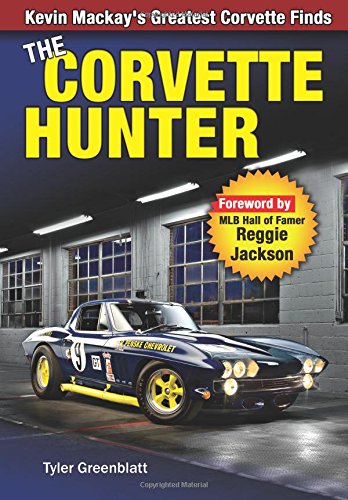
SOLD OUT
It is hard to imagine that a car with the racing pedigree of the Rebel Corvette could be neglected to the point of it being lost. Winning the GT class at the 1972 12 Hours of Sebring wasn’t enough to keep this car from becoming just another old wreck out behind the shed. It was many years before Kevin Mackay came to rescue this prominent machine.
Finding, documenting, restoring, and selling rare and valuable Corvettes is one of Mackay’s specialties. His business, Corvette Repair Inc., is considered the premier Corvette restoration facility in the country. However, it just wasn’t the Rebel L88 Corvette that he found and restored.
Mackay tells story after story of finding and restoring valuable Corvettes such as the 1960 Briggs Cunningham Le Mans racer that took 1st in class. He also tells stories of Steve McQueen’s 1966 Corvette, the 1967 Bounty Hunter racer, 1968 Sunray DX #2 and #3, and chassis #003 from 1953. If you like L88 Corvettes, no one has bought and restored more of them than Kevin Mackay!
Few authorities in the hobby could be counted on to provide this much entertainment in a single volume.

Experience the full career of racing legend Mario Andretti as recounted by the champion himself. The core of this biography is presented via interviews Andretti has given over the decades and expertly brought together by author Mario Donnini. Anecdotes, testimonials, quips, and jokes come together to give new light on motor racing history.
Mario Andretti is a legend in two worlds: Europe and the United States. Some of his accolades and championships include:
-1978 Formula 1 World Champion,
-1969 Indianapolis 500 Victor
-1965, 1966, 1984 IndyCar Champion
-1967, 1970, 1972 12 Hours of Sebring Victor
-24 Hours of Daytona Victor, and many other endurance classics
What counts most is that Mario is the last F1 world champion whose mother tongue is Italian, even if he did win the title when he was an American citizen. The volume contains hundreds of pictures–many of them previously unpublished–which illustrate the long and unrepeatable career of an all-time authentic icon of motor sport.

Everything you could want top know about increasing the performance and reliability of the Rover V8 engine which has been in production since 1967. Derived from a Buick design, the engine first appeared in the Rover P5B of 1967, but continued in use through subsequent Rover models: P6 and SD1. Not only a favourite of kit car builders, the Rover V8 also appeared in Morgans, TVRs, Land Rovers, Range Rovers, MGB V8 and the Leyland P76 in Australia. Coverage includes: limitations of standard components; short block preparation/clearances; solving the oiling & main cap problems of pre- 94 cylinder blocks; full details of cylinder head modifications; optimising ignition settings; exhaust system requirements; Holley, Weber & SU carburettor/inlet manifold options; camshaft & valve train requirements; modifications for racing; modifications for road use.

Very few motorcycles have carved a mark in history like the Vincent V-twin, from its arrival in 1946 and up to the present day. On the road, in club racing, in drag races, or competing for land speed records, it dominated the motorcycle world, leading to the famous catchphrase coined by the factory: “The World’s Fastest Standard Motorcycle.” It was a FACT – NOT a slogan. Images such as that of Rollie Free, in swimming trunks, laying flat on his works-modified Black Shadow and taking the American motorcycle land speed record at Bonneville in 1948, have now passed into posterity. In fact, the big Vincent was so ahead of its time, that it continued to compete successfully – almost arrogantly – in racing until the mid-1970s, against modern bikes. No other motorcycle in the world can claim this kind of achievement.
Following the premature ending of Vincent production, Fritz Egli’s 1967 Egli-Vincent was the first chassis completely redesigned for a Vincent in 21 years. Egli’s machine inspired numerous builders for several generations and this book traces, holistically, the story of all those motorcycles in the broad context of the classic and modern history of the Vincent.
Understand how the flame of passion still burns brightly today.
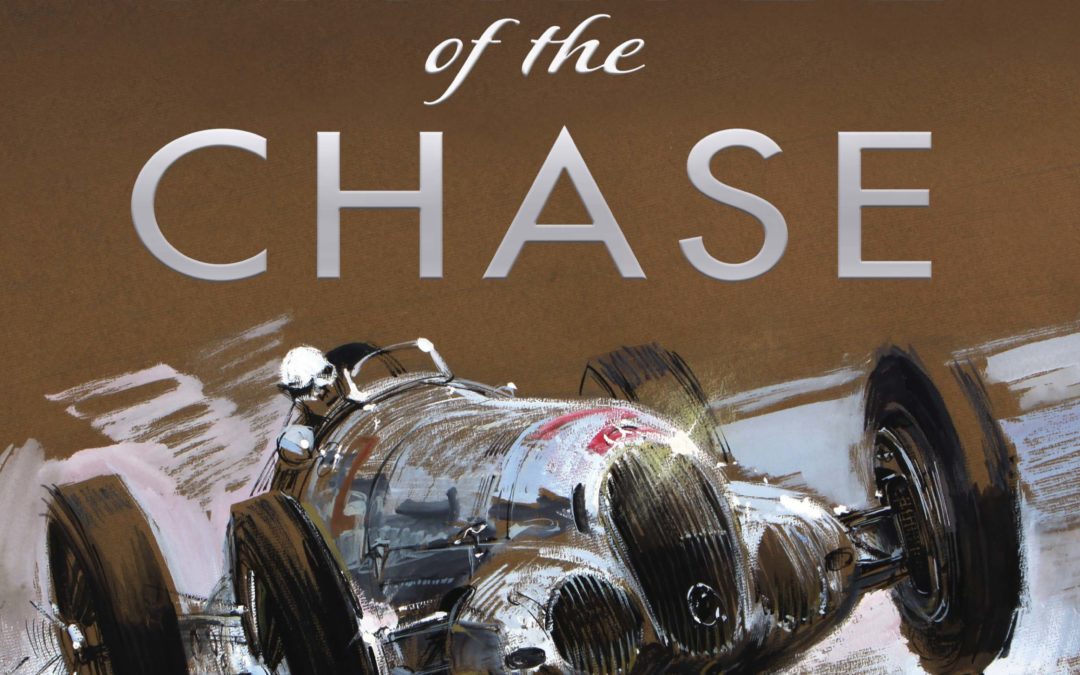
Dalton Watson’s latest autobiography is the life and times of that larger-than-life character, Colin Crabbe, who found himself at the forefront of motor racing, firstly as a privateer racing Ford GT40s in 1966 then driving in the 1967 World Championship. He cut his teeth during 1969 as an owner and team manager in Formula One having found he was too large to fit an F1. Colin reckoned he had to be one of the last great gentleman amateurs at the cutting edge of motor sport. In 1968 he located in East Germany one of the pre-war Silver Arrows, a Mercedes W125 Grand Prix car. Colin raced the Mercedes and numerous other historic racing cars until a bad crash put an end to this in 1988. When not motor racing, he travelled around the globe looking for forgotten treasures in the motoring world. What once was a hobby and passion had become a serious business, albeit one that involved Colin invariably getting himself into various scrapes, tangles and unusual adventures.
- 1,500 copies
- Page Size: 230mm x 280mm
- Page Count: 448 pages
- Photographs: 550 images
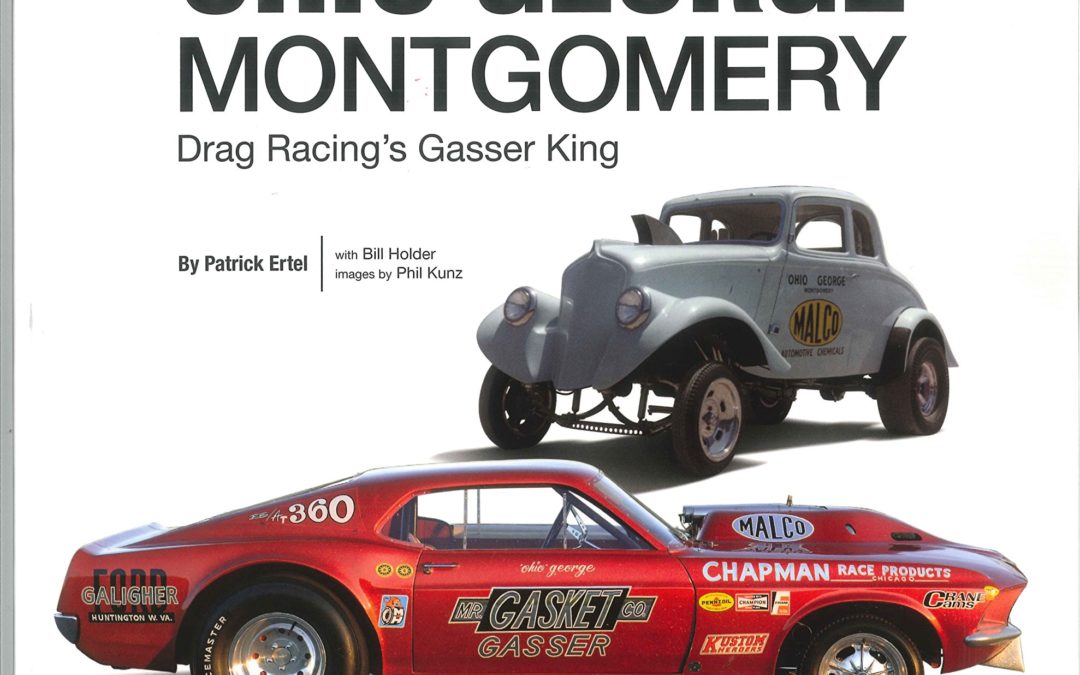
As a young man, George Montgomery lived for cars. He came of age in the classic era of the hot rod and fully immersed himself in the car culture. George Took car building seriously and went on to become one of the pioneers of the sport of drag racing. From a little shop in a suburb of Dayton, Ohio, he built and raced cars that led the world in innovation and craftsmanship. George was a leading participant in the famous “Gasser Wars” match races of the 1960’s where he earned the moniker “Ohio George,” while driving his iconic 1933 Willys to victory after victory. The era of the Gasser Wars was one of the most colorful chapters in racing history and George was one of the most successful racers of the time. Always in innovator, Montgomery built the groundbreaking Malco Gasser Mustang in 1967 and followed it with the revolutionary Mr Gasket turbocharged Mustang a few years later. After retiring from racing in 1985, George became one of the most successful engine builders in the country. He is the recipient of the National Hot Rod Association’s most prestigious awards, including the Lifetime Achievement Award, and is listed as one of drag racing’s top 50 all time drivers.
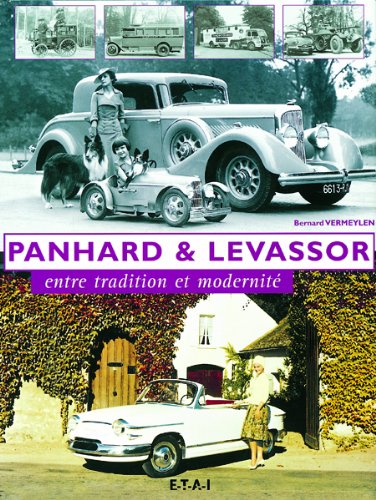
SOLD OUT
In 1890, the car does not exist. Of course, some people had built vehicles powered by steam or oil, but their unreliability and uncomfortable ride did not convince anyone that they would become anything more than a kind of entertainment. What fly has stung René Panhard and Émile Levassor, when they decided to build a car, and then embark on a small scale production, becoming de facto the first automakers in history? From 30 October 1891 to 19 September 1967 nearly 470,000 cars and commercial vehicles of all kinds will leave the assembly lines. Beyond these figures looms an extraordinary human and industrial adventure made of many technical innovations, racing victories, engines and vehicles of all kinds. But Panhard & Levassor is not only car manufacturer; until 1953, the company continued the business on which it was founded, the manufacture of machinery for working wood. It is also, one might almost say above all, an engine builder: the first V-twin under Daimler license, flat-twin Dyna and 24, through the heavy oil in 4-cylinder that will delight road and bus drivers. In 1946, the engines are truly the backbone of the entire production Panhard & Levassor. Automobiles, but also military vehicles, ships, railway equipment, generators, tractors and even airships, the Panhard & Levassor engines have known all uses, including the gasifier, a technology which the brand has made a specialty, and which rendered great services during World War II. With the theme of automobile production without forgetting the utility, and supported by specific figures, this book will explore this rich past and pay tribute to all those who made possible this adventure: the Panhard family, but also Levassor of Knyff, Krebs, Delagarde, Bionier or Fauchère, and many others, engineers and athletes, executives or commercial directors or ordinary workers.
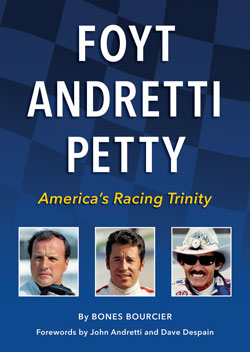
America’s Racing Trinity
Twenty years after they hung up their helmets, their names remain synonymous with the sport they carried to new heights. A.J. Foyt, Mario Andretti, and Richard Petty rose to fame just as the American media – print, radio, and, crucially, television – began to legitimize auto racing. The timing was perfect. In Foyt, Andretti, and Petty, the nation found characters as compelling as any in sports or entertainment.
Foyt was all Texas, John Wayne in a fireproof suit, stomping into Victory Lanes from Indianapolis to Le Mans. Andretti, who’d sailed from Italy with his family at age 15, struck for all outsiders the same yes-you-can chord sounded by another Italian-American, the great Frank Sinatra. Petty, the genial North Carolinian who signed autographs until the last fan went home, put a smiling Andy Griffith face on the American South, no small feat in the tumultuous ’60s.
They crossed paths often, on the track and in the headlines. Take 1967, which opened with Andretti beating NASCAR’s best at Daytona, peaked with Foyt’s third Indianapolis 500 win, and ended with a record 27 victories for Petty. Or the three-season stretch from 1977-79, during which Foyt became the first four-time Indy winner, Andretti earned the World Driving Championship, and Petty captured a landmark Daytona 500.
They even throttled back their careers in near-unison, Petty in 1992, Foyt in ’93, Andretti in ’94. Today all three are revered; as they walk through crowded pit areas, people step back to make way. Charisma never ages.
This is no mere three-act biography. Laced with quotes from first-hand interviews with Foyt, Petty, Andretti, and their peers, and spiced with period accounts from the motorsports world and the changing social landscape, this is award-winning author Bones Bourcier’s history of modern American automobile racing as refracted through the lives of three extraordinary champions.

Jonathan Williams was born in Cairo in 1942 where his father James, a non-career officer in the RAF, was stationed. He grew up at Endsleigh School in Colchester which his father owned and ran as headmaster, before being “sentenced” to four years at Cheltenham College, followed by a brief tenure at the Chelsea College of Engineering, an establishment attended briefly by the likes of Mike Hawthorn and Stirling Moss. Having had his fill of education, Jonathan struck out on his own to become a racing driver, climbing the ranks of the cut-and-thrust world of Formula 3 in the early 60s to employment by the Italian De Sanctis team from Rome, then Ferrari for the 1967 season. From Ferrari, Jonathan moved to Abarth, Serenissima then de Tomaso, rounding out his racing career driving the Solar Productions Porsche 908 camera car at Le Mans in 1970, then doing a stint as a stunt driver on Steve McQueen’s classic film. Retiring from racing in 1971, he flew corporate jets for twenty years before trading that life in for one in a VW camper, then a small motorhome, drifting through Europe for two decades, visiting friends and enjoying life. In his own words, Shooting Star On A Prancing Horse tells Jonathan’s story, on and off the track, until his untimely death in 2014.

“Almost 30 years have passed since the publication of the first book about the famous Tipo 60 and 61 Birdcage Maserati race cars. A new, more comprehensive description of their competition history has been long overdue and Dalton Watson Fine Books are delighted to announce the publication of Maserati Tipo 60 and 61; The Magnificent Front-engined Birdcages. Much additional information has come to light in the last two decades which has enabled the authors, Willem Oosthoek and Michel Bollée, to include numerous updates, corrections, and further elaboration regarding the history of this innovative design.
In 1959, while Ferrari and Aston Martin battled for supremacy in the World Sports Car Championship, Maserati returned to the racing scene with an amazing sports racer, revolutionary in concept: the 2-liter Tipo 60. The car received the nickname ‘Birdcage’ because of the design of its chassis and was immediately successful. The 3-liter version, the Tipo 61, appeared soon after in response to demand from the many private owners and drivers determined to make the Ferraris eat dust. Twenty-two front-engined Birdcage Maseratis campaigned in a vast number of races during the nine-year period between 1959 and 1967. Light and fast, by 1967 they had accumulated almost 170 victories. The new book is a complete history of the car during those years and, for the first time, includes the many Birdcage appearances in European events.
Part 1 of the book covers each individual year, divided in segments on World Championship, North American and European events. Part 2 portrays the individual race history of each chassis number, as well as the owner sequence over the years. At the end of the book each driver is linked to the specific chassis number[s] of the Birdcages in which he competed.
The authors have had the benefit of inpupload ut by many personalities involved in the early history of the Birdcage Maseratis, both drivers and car owners. The book contains first-hand anecdotes, the result of interviews with Bill Krause [the 1960 Times Grand Prix victor, who also wrote the Introduction], Chuck Daigh, Jim Jeffords and many more. In addition, making the book come alive visually are the great images taken by professional photographers such as Flip Schulke and Bob Tronolone, and photographs from the personal collections of the owners and drivers, many of them previously unpublished. “
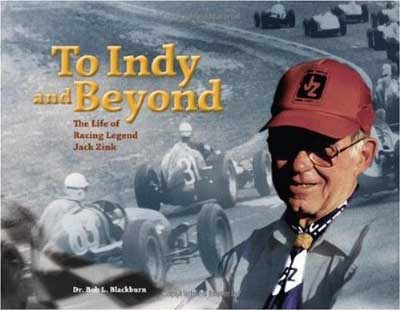
Jack Zink is a legend in the world of car racing. As a driver for more than twenty years, he won stockcar races on dirt tracks, accumulated trophies in off-road dune buggies, and even set a flying mile speed record in a 1957 Pontiac he designed and built for the early NASCAR circuit. As a team leader, mechanic, and engineer, he pushed the limits of technology with his innovative designs for cars that were lighter, lower, and more powerful. Even his failures, such as the attempted use of a turbine engine in a car, opened new doors that others rushed through in the pursuit of speed and durability. Perhaps he is best remembered for his victories at the greatest track in the world, the Indianapolis Motor Speedway, and the greatest race in the world, the Indianapolis 500. From 1950 to 1967, Jack walked shoulder to shoulder with the greatest team owners, mechanics, and drivers in racing history. Twice, his team won the coveted Borg Warner Trophy, in back-to-back Indy victories (1955 and 1956). But Jack was much more than a pioneer in car racing. He raced sailboats. He raced motorcycles. He also was a skilled engineer and businessman, ultimately building not one but two companies into international giants that still dominate the combustion industry with burners, flares, and incinerators that greatly reduce pollution. Even with all these accomplishments, Jack was most proud of his service to his community, especially the Zink Ranch, a 33,000-acre nature preserve in the Osage Hills of Oklahoma that will perpetually provide open space in an increasingly crowded and urban world. This biography weaves all of these stories into a portrait of Jack Zink. Along the way are the friends and family members who were part of the adventure, as well as the challenges and opportunities that drove him forward. Here is the story of one amazing man who lived by a simple code: “The man who wins is the man who tries.”
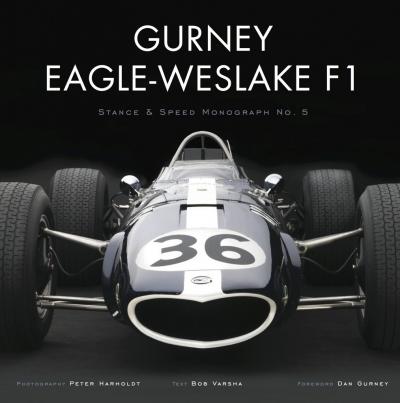
“In 1967 Dan Gurney gained a permanent place among America’s greatest racing heroes. Driving his Gurney-Weslake Eagle, he won the Belgian Grand Prix and became the only American to win a modern-era European Grand Prix race in an American car. In doing so he defeated such legends as Jim Clark, Graham Hill, Jack Brabham, and Jackie Stewart, more established teams like Ferrari and Lotus, and conquered the menacing Spa-Francorchamps circuit itself, much of which was made up of dangerous and narrow public roads that the racers traversed at speeds approaching 200 mph.
This exciting new addition to the Stance & Speed Monograph series is written by broadcasting veteran Bob Varsha, known to American racing fans as the voice of Formula One races on Speed TV for more than a decade. As always, the photography of Peter Harholdt enhances the classic beauty of the car, while Gurney himself adds a foreword in which he reflects on this remarkable car and his legendary accomplishment.
”



